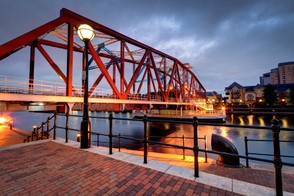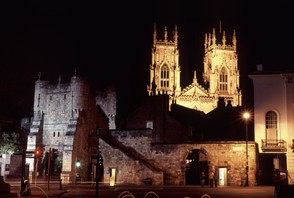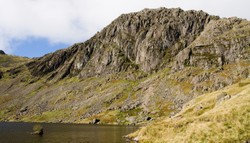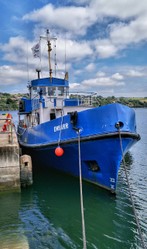The southern boundary of the North West once ran along the Mersey, but Manchester spread southwards across the Mersey and as I said, many now think of Cheshire as North West. While England has no official second city, many people agree that unofficially Manchester is it. Recently the government has tried to stem the overheating of the economy of London, which has placed enormous pressures on housing and services in the South East by empowering Manchester as part of its strategy to develop a northern powerhouse. Other cities are expected to join in the movement. The only condition is that these cities elect their own mayor. We have mayors already, but they are merely symbolic, but now we are pushing for mayors with power.
Manchester, in South East Lancashire, is the social hub of the North West, and is the place where many people go for entertainment. It is famous for its night clubs and restaurants. The ex-United and City footballer who claimed on his native Argentine television that Manchester had only two restaurants really meant that there were only two that he liked, and this was grossly unfair. The city has museums. Besides the museum at the university of Manchester, at which I studied, there is the museum of science and industry, which includes the Aerospace museum, and some smaller museums. Manchester United and Manchester City are the two largest clubs in a football loving conurbation, but there are others with their own great traditions, such as Bolton Wanderers. There is also the Whitworth Art Gallery.
At the Western end of South Lancashire there is Merseyside, at the centre of which is Liverpool. It is famed as the home of the Beatles and some other musicians. The city went through a bad patch economically, but there is currently much effort being made to drive it forward and it is a city making progress, for it shares in the dynamism of South Lancashire. It has two famous football clubs, Liverpool and Everton.
As you proceed further north you pass the resort town of Blackpool, which is one of several small towns in central Lancashire. It is a town known for its annual illuminations, which take place in Autumn. Many people take a day trip there. North from there you reach Morecambe and Lancaster. The word morecambe in old Cumbric [a Celtic tongue once spoken here], means Big Bay. It is a large sandy bay. Enjoy the view but abide by the warning signs. The sands are dangerous, and a few years ago some illegal Chinese immigrants employed as cockle pickers were drowned when caught by the fast incoming tide.
Further north you come to the Cumbria, one of England's most beautiful counties, where we find the Lake District, a region where there are beautiful lakes surrounded by mountains. It is the place where the Lakeland poets, Wordsworth and Coleridge worked, and you can still visit Wordsworth;s cottage in Grasmere, a beautiful village.












 Pilgrimage. A reviewon 06/15/2025
Pilgrimage. A reviewon 06/15/2025
 Leo the Fourteenthon 05/09/2025
Leo the Fourteenthon 05/09/2025
 The Melsonby Hoardon 03/25/2025
The Melsonby Hoardon 03/25/2025



Comments
There has been an Irish presence in North West England since the eighteenth century. The pattern of migration might deriv from then.
Thank you for your comment below, in answer to my previous observation and question.
Might those County Mayo-ites have chosen your area because of socio-politico-economic opportunities or because of historical, steady northwest Irish settlements there or because of both or because of neither?
I was thinking about immigrants and how they made our cities grow. Take the example of my area. It has many Irish people, but the Irish here are often from the North West,often County Mayo. This happened because some North Western Irish settled in the region and their relatives followed on to a region where they would be near relatives. Of course there were always some individuals who stayed at home.
Thank you for your comment below, on Mar 22, 2023, in answer to my previous, same-day observation and question.
Your answer advises us that "when one person came to Manchester, for example, others joined them, and subsequent generations went where there were people whom they knew, and so on."
Did some family members always dwell basically year-round in the original family homeland?
Or did all ultimately do as the first daring individual did and perhaps designate the original homestead or homesteads as holiday and vacation spots?
The Irish got everywhere, and there are clear migrant routes from one area to another. My local area has many people whose families came from County Mayo. The reason for this is when one person came to Manchester, for example, others joined them, and subsequent generations went where there were people whom they knew, and so on. North West England attracted Irish as it is geographically not far from Erin.
The third paragraph to your first subheading, The Nothern Identity, contains as its last sentence the observation that " As you would expect, the north west has strong ties with Ireland, for many Irish have over the centuries settled there [including my kinsfolk.]."
What prompted the Irish diaspora to northwest England? Would those who were left behind have maintained close or semi-sporadic contacts with their family and friends relocated across the waters?
The North of England is so much more worth a visit than the London area in terms of natural beauty and history. The London area of course has all the pomp and royalty which brings people to Britain but leave London and that's where the real England is.
A very good article.
I loved your presentation. I am interested to learn more about the UK and Ireland, and look forward to visiting these lands again in the near future.
Thank you.
Thanks for sharing. I always love to learn about other lands and places.